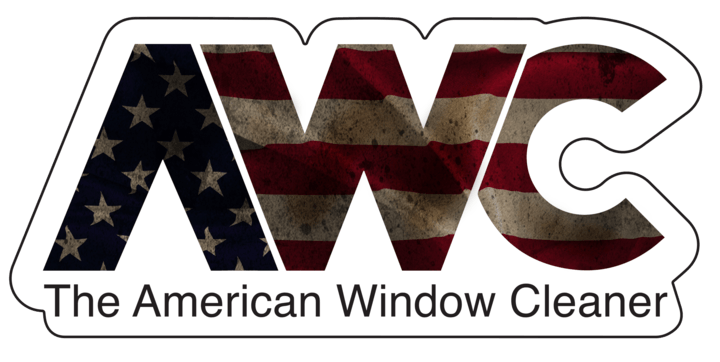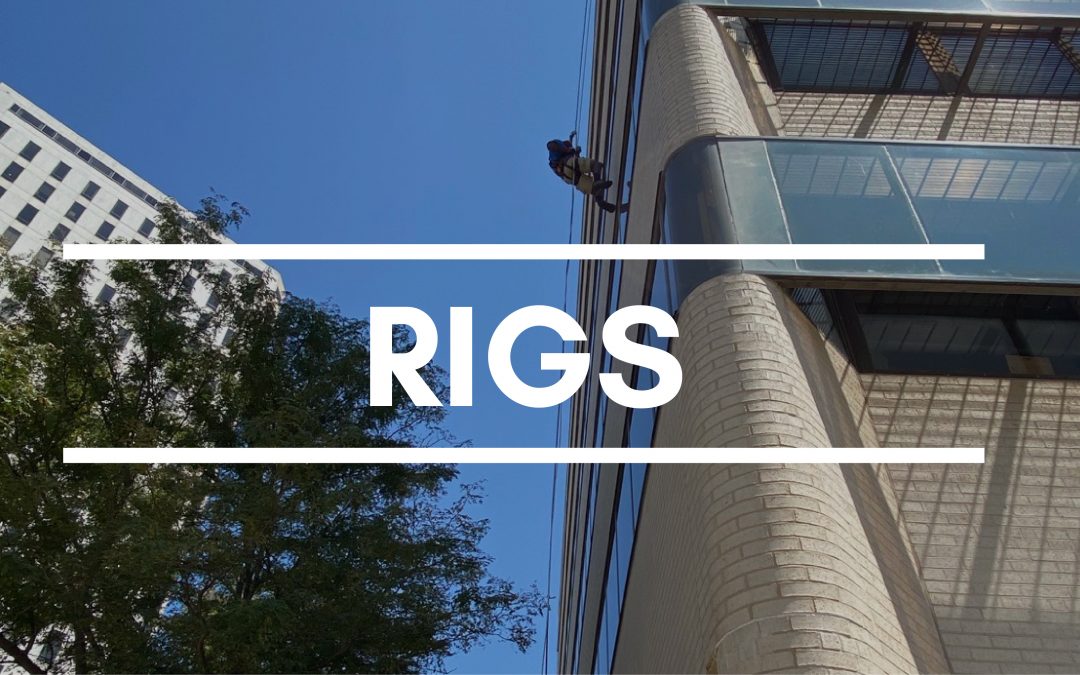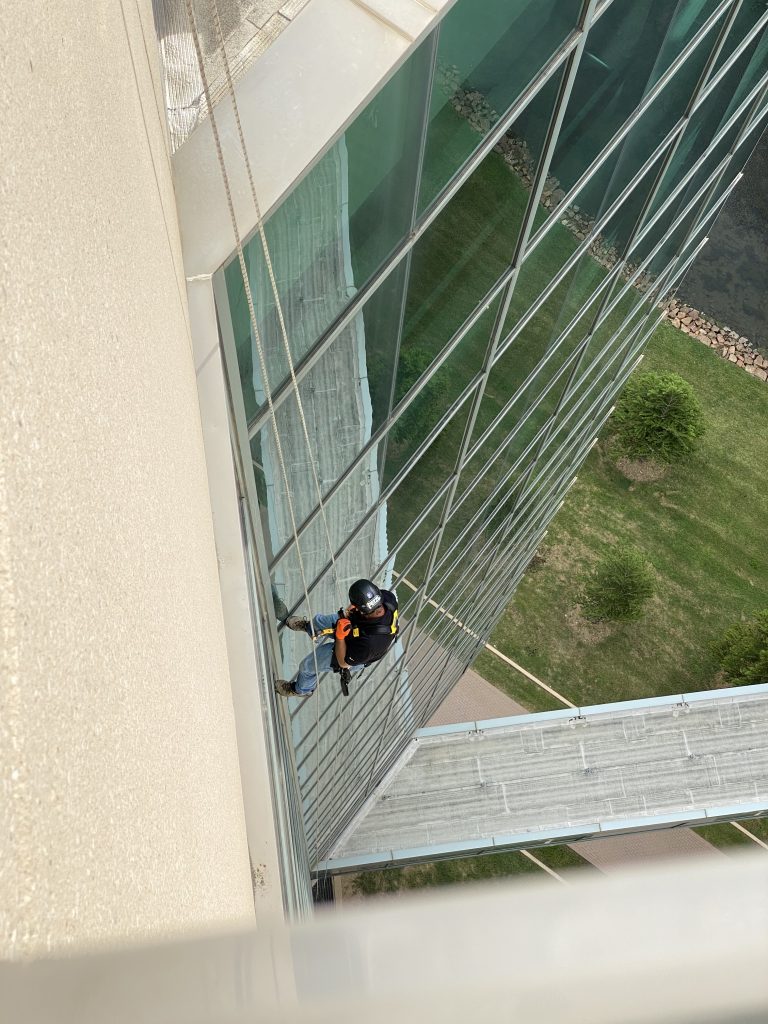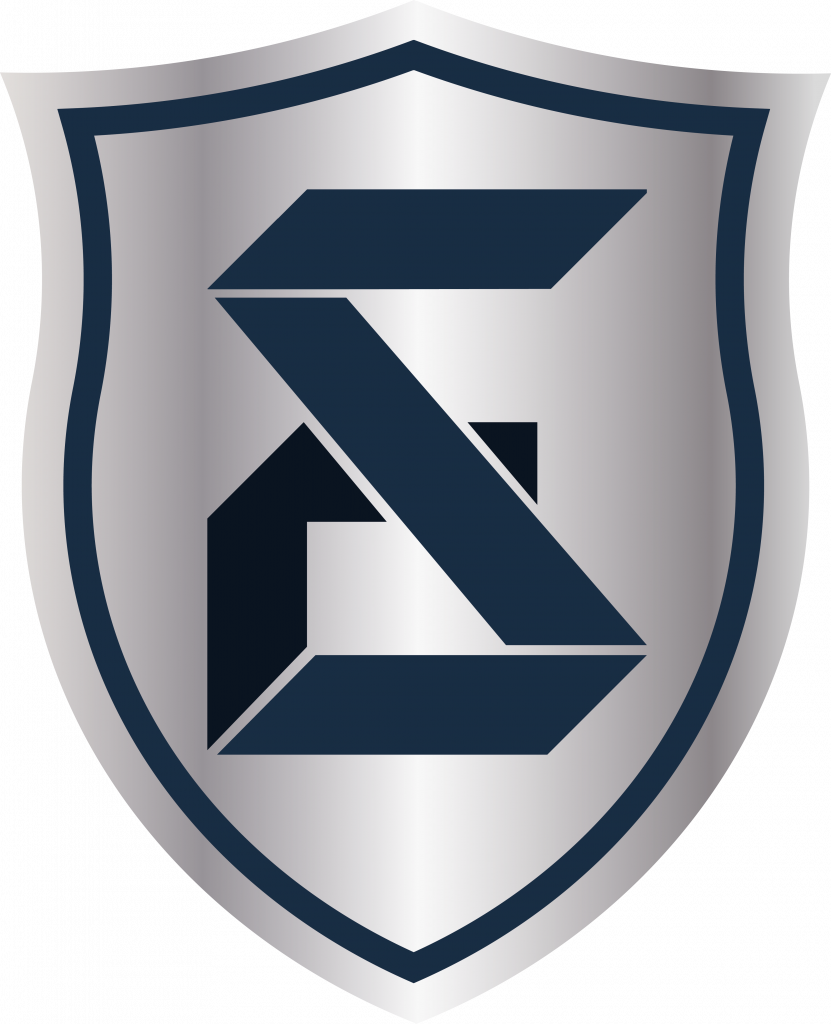High Rise window cleaning has always been an evolution and safety features and enhancements have been made thru the years. We are going to see new evolutions coming to our industry in the future. One such change to industry standards is an interchangeable 2-line system.
>>> First, what does an interchangeable system mean?
It simply means that both ropes I.e., main line and safety line are the same diameter.
>>> Second, why is that an important safety factor?
For years not much consideration has been given to the ropes being the same in our industry. A descender is chosen, and whichever rope works with that choice is utilized. The same process takes place for the back-up and safety line. However, OSHA 1910.27 specifically calls for a rescue plan when utilizing rope descent systems. In the case of a main line severe, assuming the technician has rigged in such a way that his/her descent device and chair hasn’t fallen to the ground, the descent device can simply be re-attached to the safety line and the technician can descend to the ground on the safety line. Since timing is essential regarding rescue, this practice makes a great deal of sense. Now it is true that this practice may be feasible with certain devices though the ropes are different diameter. For instance, a person utilizing a rack system can run both 7/16 and 1/2 thru the device. It certainly wouldn’t work as well for those using 5/8-inch line as safety. Nonetheless, it is possible to have different diameters of rope and still maintain interchangeable systems. Serious thought though should be given to this concept of interchangeability. It is a safer practice and since employers need to consider a rescue plan, it makes the most sense for the technician to be able to perform self-rescue in as many scenarios as possible.
Let’s now discuss the rigging required to assist us in self rescue. Traditionally, window cleaners have used a two-line system, but they act independently. What is meant by that is the worker is sitting in a chair and that chair isn’t attached to the worker. Further, the descender is not attached to the person either as it is attached to the chair. The issue with this in an accident where the main line is severed, the chair and the descender go to the ground and the person is left hanging by their harness and rope grab without means of easily lowering themselves. It now escalates to an assisted rescue, that is someone will have to lower at minimum another device for attachment to the safety line. This problem is alleviated by attaching the chair to the harness. Making a true two-line system. This can be done several ways but usually requires a full body harness as opposed to a regular fall protection harness. Nonetheless, the practice is a safer means and considers rescue.
Why not evaluate your RDS equipment for the following with concerns an interchangeable rope system? One will my descender of choice work on my safety line? Two, in the case of a main line severe would my chair and descender stay with me, or would it be laying on the ground?




